Related Research Articles

Father Time is a personification of time. In recent centuries he is usually depicted as an elderly bearded man, sometimes with wings, dressed in a robe and carrying a scythe and an hourglass or other timekeeping device.

Andrea Mantegna was an Italian Renaissance painter, a student of Roman archeology, and son-in-law of Jacopo Bellini.

Giovanni Battista Tiepolo, also known as GiambattistaTiepolo, was an Italian painter and printmaker from the Republic of Venice who painted in the Rococo style, considered an important member of the 18th-century Venetian school. He was prolific, and worked not only in Italy, but also in Germany and Spain.

Ca' Rezzonico is a palazzo and art museum on the Grand Canal in the Dorsoduro sestiere of Venice, Italy. It is a particularly notable example of the 18th century Venetian baroque and rococo architecture and interior decoration, and displays paintings by the leading Venetian painters of the period, including Francesco Guardi and Giambattista Tiepolo. It is a public museum dedicated to 18th-century Venice and one of the 11 venues managed by the Fondazione Musei Civici di Venezia.

The Loggia dei Lanzi, also called the Loggia della Signoria, is a building on a corner of the Piazza della Signoria in Florence, Italy, adjoining the Uffizi Gallery. It consists of wide arches open to the street. The arches rest on clustered pilasters with Corinthian capitals. The wide arches appealed so much to the Florentines that Michelangelo proposed that they should be continued all around the Piazza della Signoria.

Arturo Martini (1889–1947) was a leading Italian sculptor between World War I and II. He moved between a very vigorous classicism and modernism. He was associated with public sculpture in fascist Italy, but later renounced his medium altogether.

Giovanni Francesco (Gianfrancesco) Susini was a Mannerist Florentine sculptor in bronze and marble.
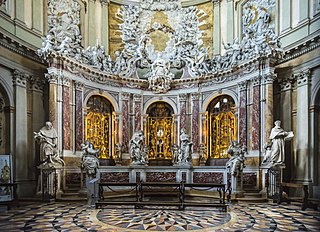
Filippo Parodi was an Italian sculptor of the Baroque period, "Genoa's first and greatest native Baroque sculptor".
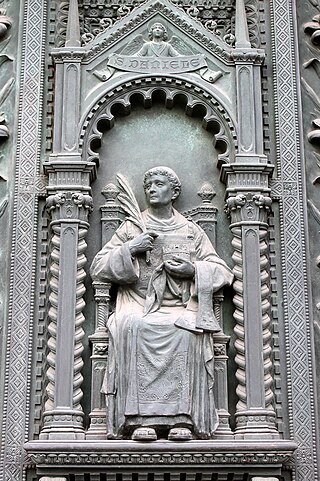
Saint Daniel of Padua is venerated as the deacon of Saint Prosdocimus, the first Bishop of Padua.
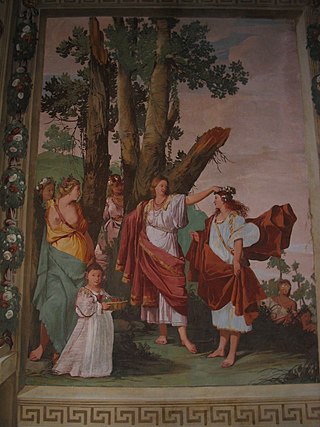
Giulio Carpioni was an Italian painter and etcher of the early Baroque era.
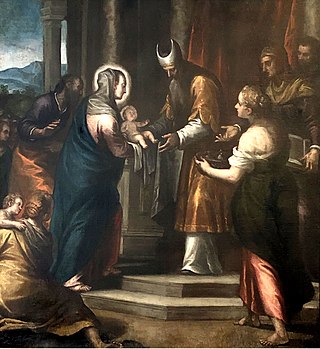
Alessandro Maganza (1556–1630) was an Italian painter of the Mannerist style, born and active in Vicenza, as well as in Venice.
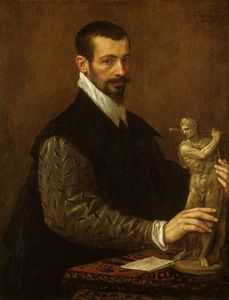
Tiziano Aspetti (1559–1606) was an Italian sculptor of the Renaissance. He was born in Padua and active mainly there and in Venice. He completed both large and small sculpture in bronze. Among his large works are bronze statues in the façade of San Francesco della Vigna and of Saint Anthony and many other sculptural decorations for the Basilica of Sant'Antonio of Padua.

Leone Leoni was an Italian sculptor of international outlook who travelled in Italy, Germany, Austria, France, Spain and the Netherlands. Leoni is regarded as the finest of the Cinquecento medallists. He made his reputation in commissions he received from the Habsburg monarchs Charles V, Holy Roman Emperor and Philip II of Spain. His usual medium was bronze, although he also worked in marble and alabaster, carved gemstones and probably left some finished work in wax, as well as designing coins. He mainly produced portraits, and was repeatedly used by the Spanish, and also the Austrian, Habsburgs.
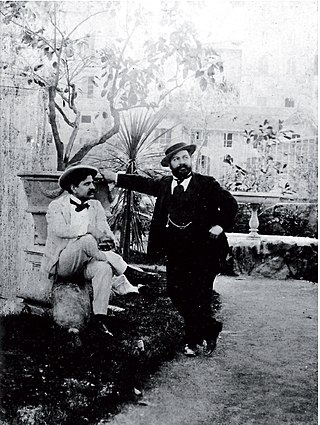
Mario Rutelli was an Italian sculptor.
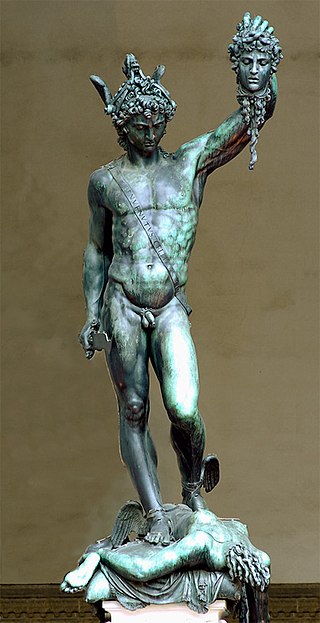
Perseus with the Head of Medusa is a bronze sculpture made by Benvenuto Cellini in the period 1545–1554. The sculpture stands on a square base which has bronze relief panels depicting the story of Perseus and Andromeda, similar to a predella on an altarpiece. It is located in the Loggia dei Lanzi in the Piazza della Signoria in Florence, Italy. The second Florentine duke, Cosimo I de' Medici, commissioned the work with specific political connections to the other sculptural works in the piazza. When the piece was revealed to the public on 27 April 1554, Michelangelo's David, Bandinelli's Hercules and Cacus, and Donatello's Judith and Holofernes were already installed in the piazza.

Pauwels Franck, known in Italy as Paolo Fiammingo and Paolo Franceschi, was a Flemish painter, who, after training in Antwerp, was active in Venice for most of his life. He is mainly known for his landscapes with mythological, allegorical and religious scenes. He worked in a Mannerist style showing the influence of Tintoretto, Veronese, and Bassano.

Villa Manin is a Venetian villa located in the comune of Passariano in Codroipo, Friuli-Venezia Giulia, in northeastern Italy.

Nicola Rubino was an Italian sculptor and painter.
The Studiolo of Isabella d'Este was a special private study, first in castello di San Giorgio, later the Studiolo was moved to the Corte Vecchi apartments in the Ducal Palace in Mantua, designed by, and with a collection of art specially commissioned by Isabella d'Este.
References
- ↑ "An Allegory of Triumph by BERTOS, Francesco". Web Gallery of Art. Retrieved 2023-06-19.
- 1 2 "Biography of BERTOS, Francesco in the Web Gallery of Art". Web Gallery of Art. Retrieved 2023-06-19.
- ↑ "Francesco Bertos | Saint Daniel of Padua dragged by a horse before the Roman governor of Padua | Italian, Padua". Metropolitan Museum of Art. Retrieved 2023-06-19.
- ↑ Bertos, Francesco (c. 1700), An Allegory of Triumph , retrieved 2023-06-19
- ↑ "Allegorical Groups Representing the Four Continents: America by BERTOS, Francesco". Web Gallery of Art. Retrieved 2023-06-19.
- 1 2 Wengraf, Patricia. (2009). Review of Bertos: The Triumph of Motion, by Charles Avery. The Burlington Magazine, 151 (1280), 780. JSTOR 40480408